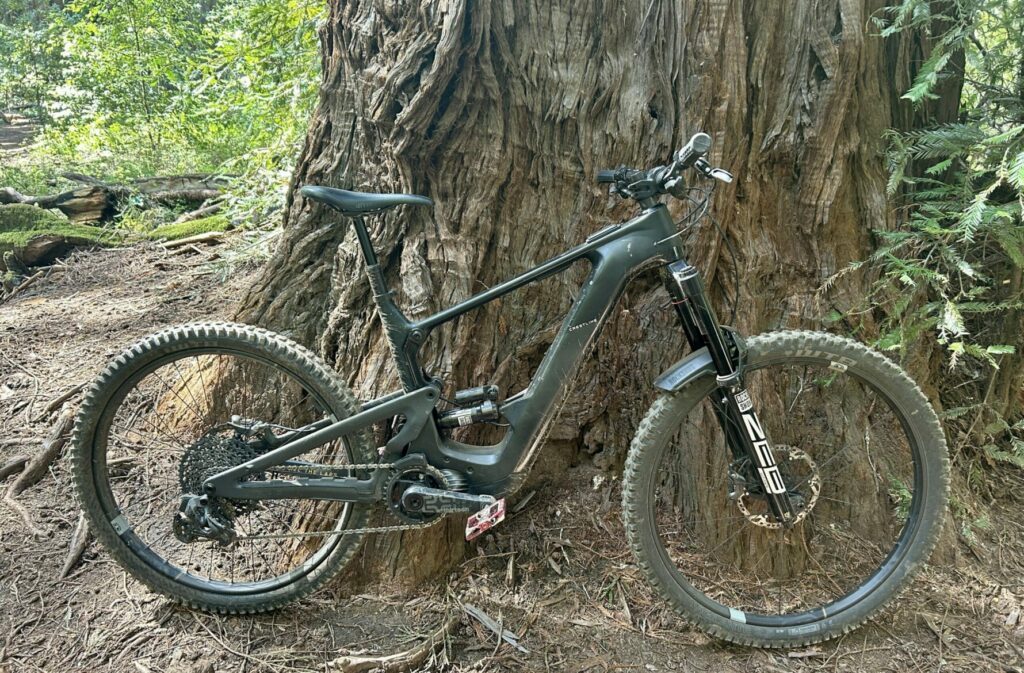In the world of e-bikes, small companies aren’t the norm. Small batch production runs aren’t common. There are some new brands in the market, but they often tilt toward mobility and commuter products, not high-performance e-MTBs. This is all to say that Crestline is swimming against the current.
Started in 2020 by two guys with essentially no bike industry experience, Crestline is young, but it has made all of the right moves. It navigated a pandemic, made connections at a renowned carbon-fiber manufacturer in Vietnam, and partnered with key brands like Bosch and Cascade Components to ensure its first e-MTB was competitive in an increasingly competitive market. Oh, and along the way, Crestline landed Sam Blenkinsop as its first sponsored rider. Not bad.
Setting aside all of the context and prelude, the RS 75/50 EEB is an incredibly good bike. Period. Whether it had been made by this industry freshman that aced every exam or an established player in the e-MTB space, this is arguably the best e-MTB I’ve ridden yet.
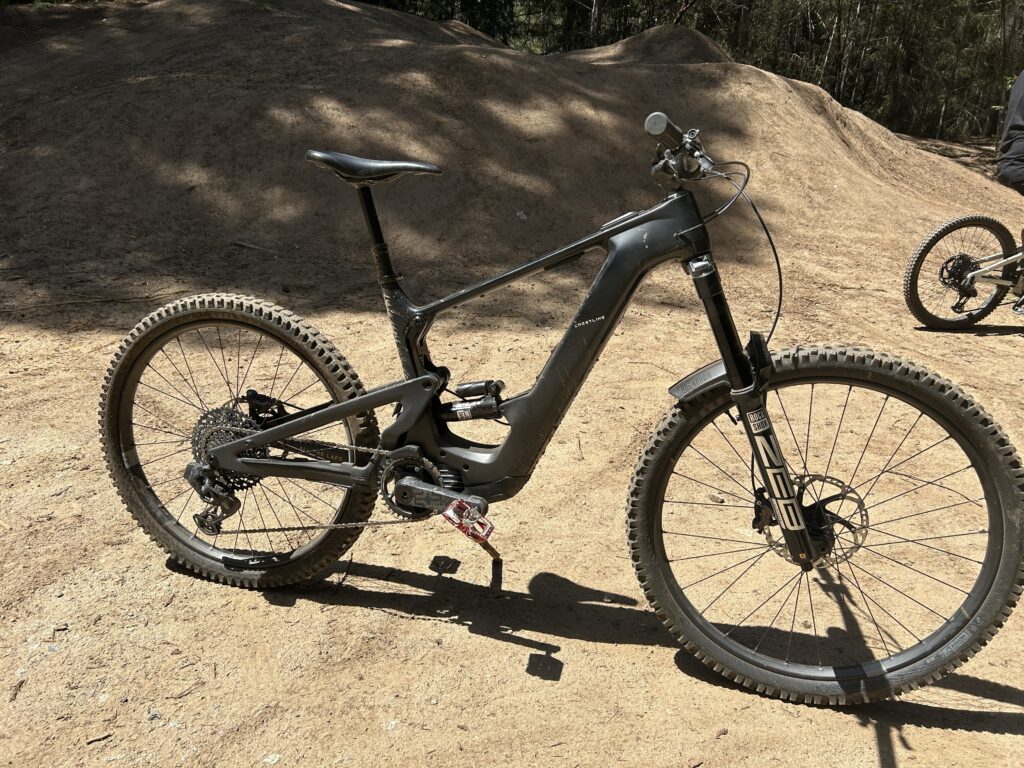
The Rides: Not a “Weekend,” but We’ll Count It
This is still a developing review format on DC, so I’m allowed to bend the rules. I rode the Crestline three times over the course of two days at Sea Otter Classic. I also got in a quick ride on this same model in Southern California on a visit to Bosch.
That said, I think I put the Crestline through its paces on a variety of terrain, and I even managed to kill that massive 750wh battery.
Ride 1: Santa Cruz Campus Trails
With a steady, quick climb to the top and tons of downhill tracks, this zone is ideal for e-bikes. The day before Sea Otter, I got a ride up to Santa Cruz with Troydon, one of the Crestline founders, and Sam Blenkinsop. This terrain is ridiculously steep, but the dirt has such good traction that you can brake later and corner harder than expected. We did five laps over about 24 miles.
Ride 2: Sea Otter “Enduro” Course
When we got back to Laguna Seca, Sam wanted to preview the race course for the following day’s enduro, so with about maybe 30% battery, I figured I’d tag along. Why not? If you’re familiar with the Sea Otter venue, you know it has no trails that would reasonably be termed enduro tracks. Essentially, we did a cross-country loop. As my battery dwindled, I started using Eco mode more and more, even going so far as to turn off the Bosch Performance Line CX Race drive unit at strategic points. At the end of the 14-mile ride, I was slogging up the final climb with a dead battery.
Ride 3: Sea Otter E-MTB Race
Also a bit of an outlier, Sea Otter hosts an e-MTB race on a short, grassy cross-country circuit. I’ve raced it a few times now. It’s kind of weird. It’s hard, but for some reason I kind of like it. It’s an hour of full-gas, full-boost racing, and I must say, having the Race motor was a distinct advantage.
Crestline’s Bosch Performance Line CX Race Motor
I went in depth on this drive unit in a separate article, so no need to rehash things. I will say that this ultra-powerful motor makes sense in the context of this long-travel bike. Troydon explained that Crestline is all about the full-power motors, because he and his partner, Mark Clemens, are both downhillers first and foremost.
Their approach is to use an e-MTB as a shuttle machine that can slay almost any downhill track. That’s why this bike has 175mm of rear travel and is compatible with dual-crown forks. And for that kind of tonnage, you want a stout motor and big battery to power up the hills. Also, this setup might work well for larger riders. However, if you want an e-bike that feels like a conventional MTB, this might be a bit much in terms of both power and weight.
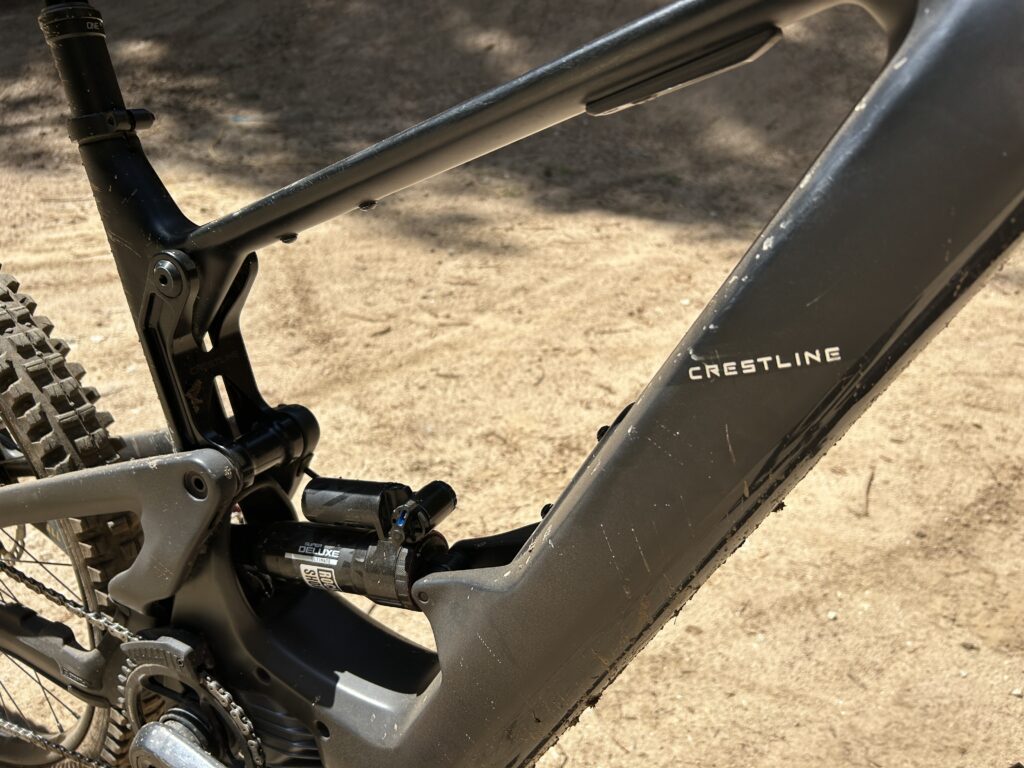
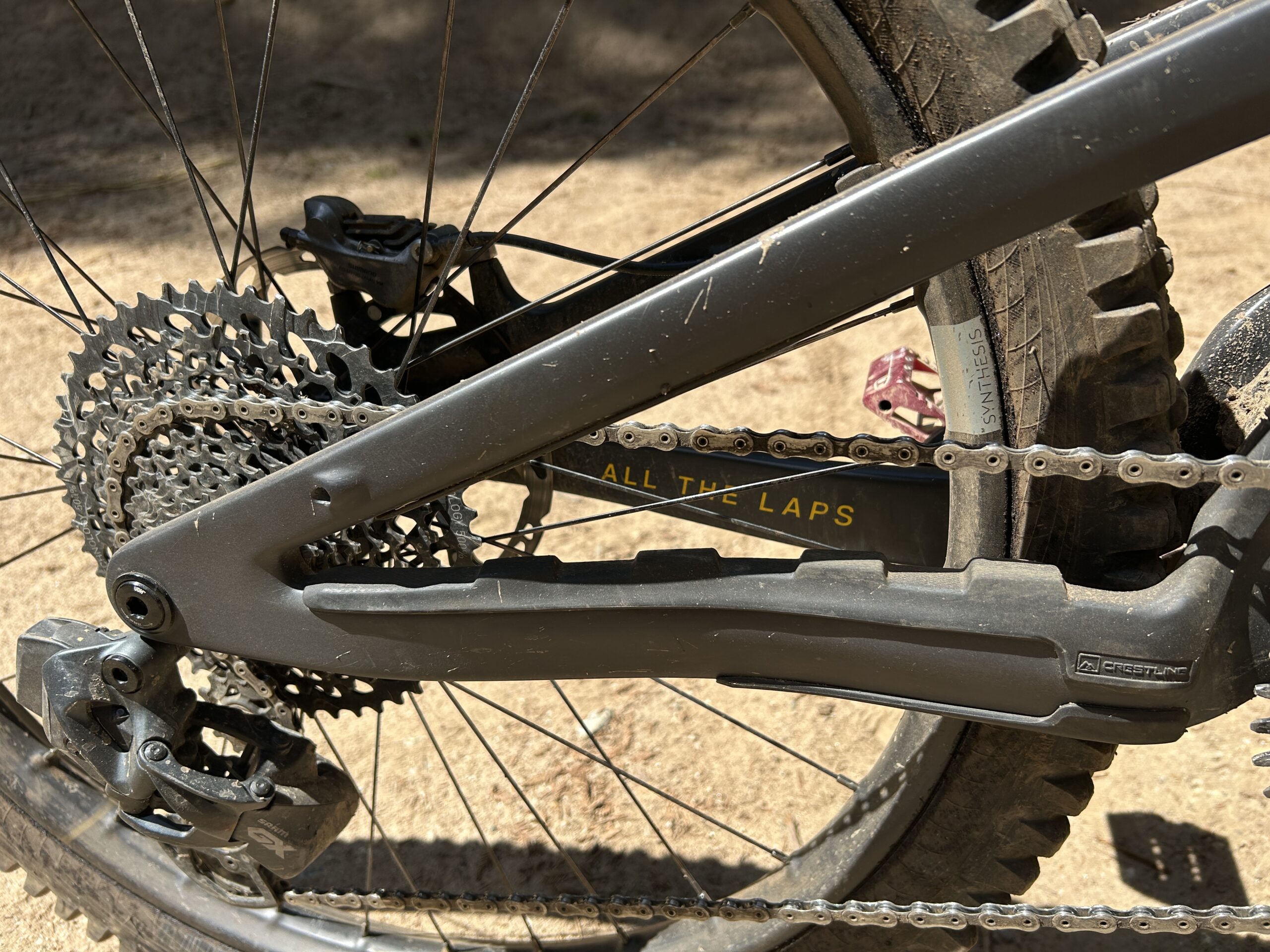
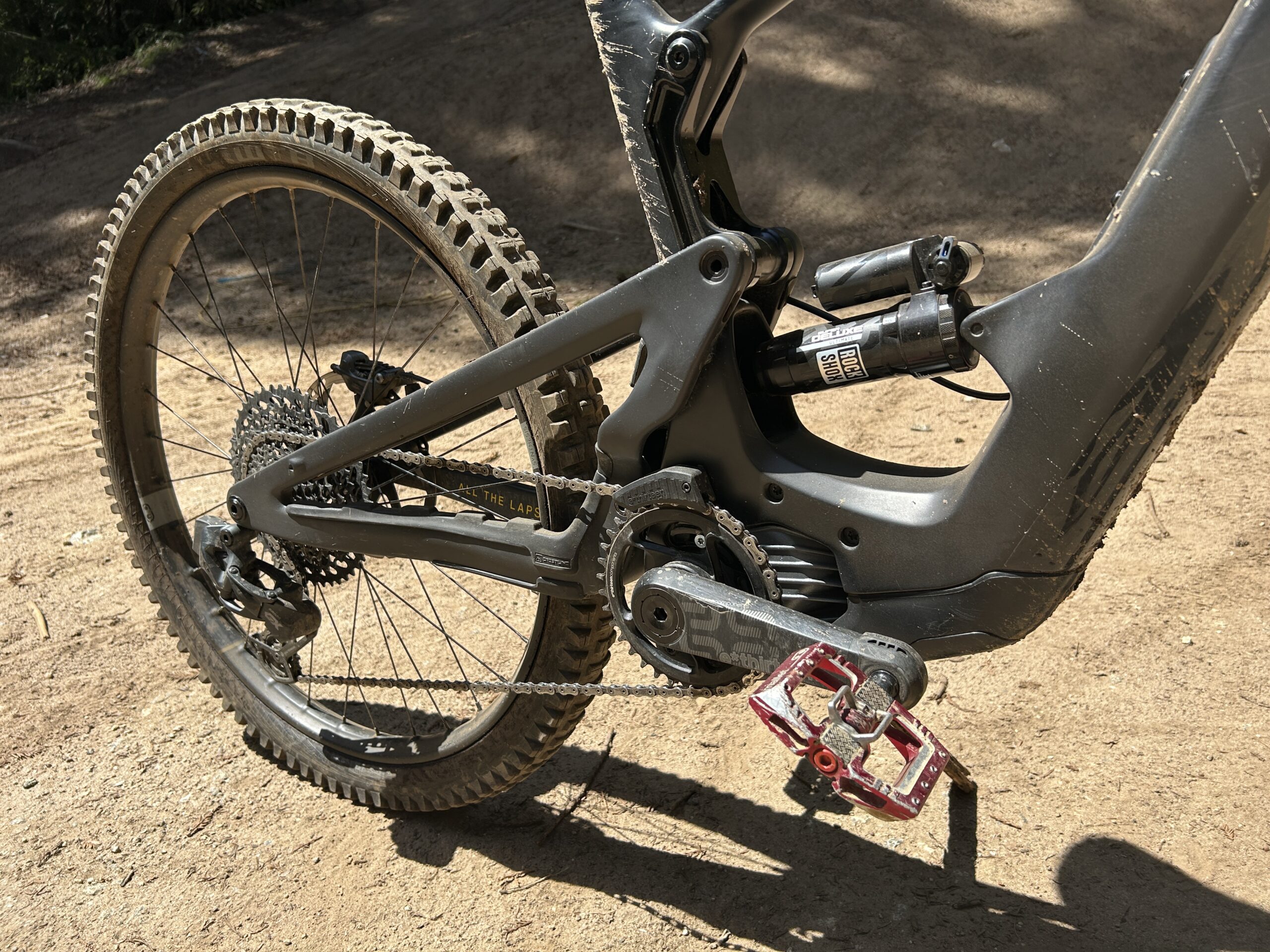
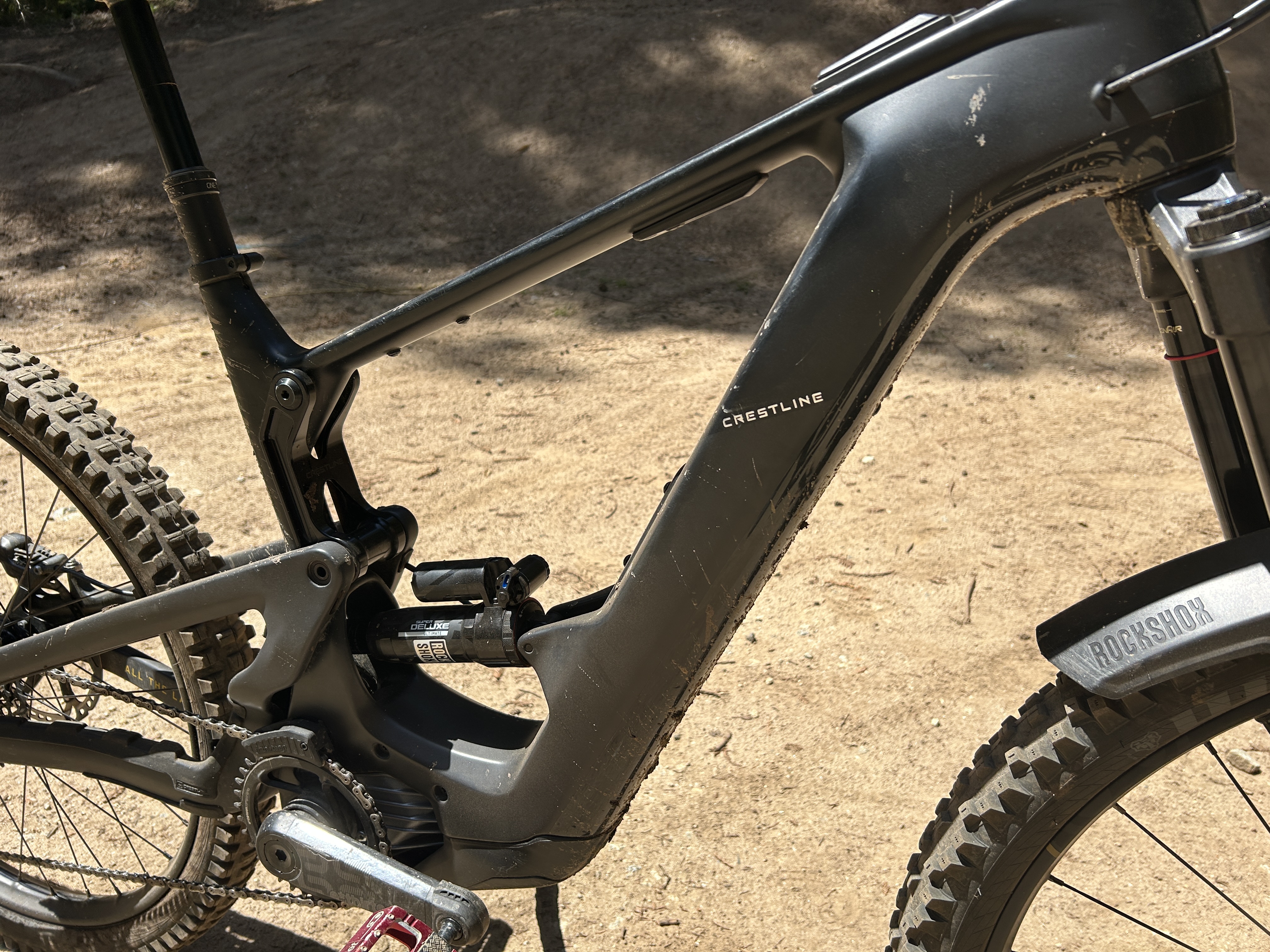


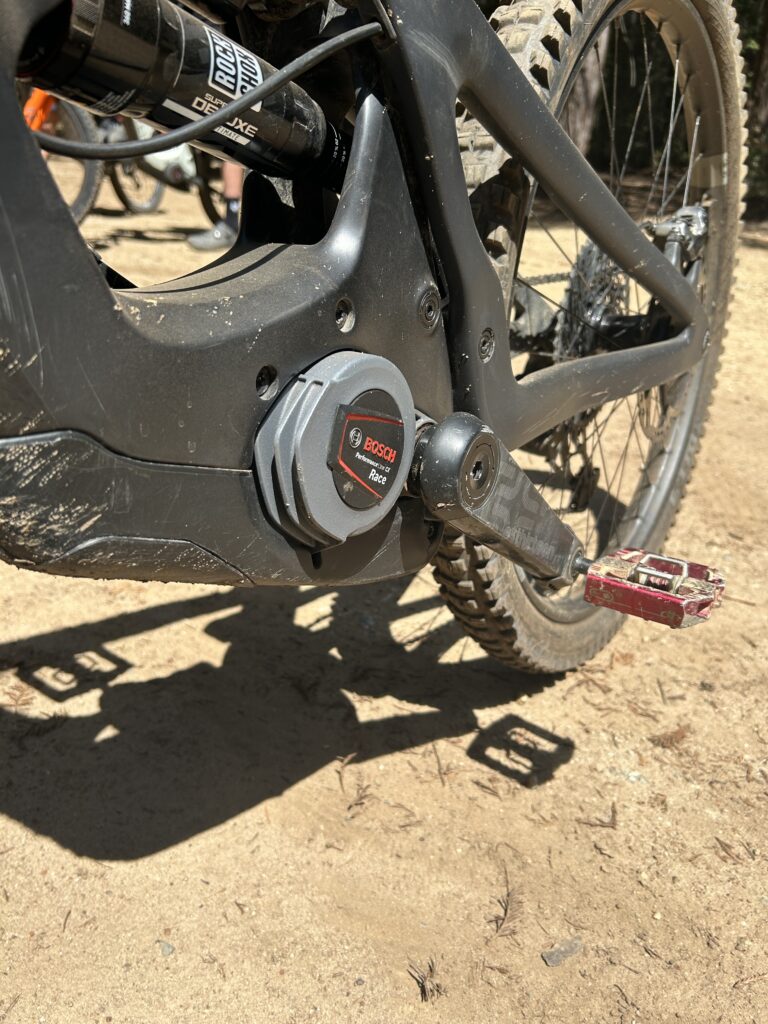
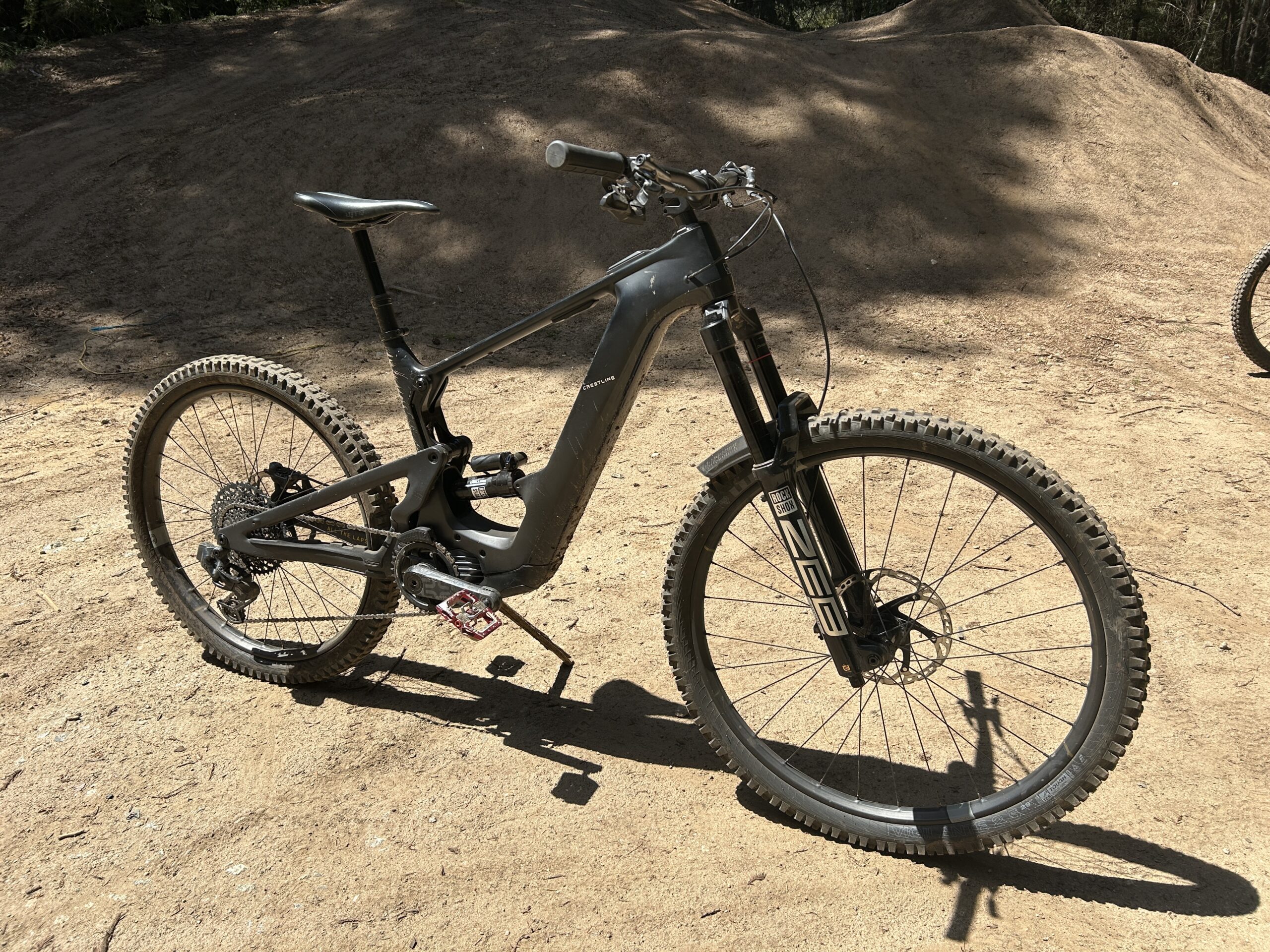
Review: Crestline RS 75/50 EEB
I’ll admit that when we rolled out to Santa Cruz, I was a bit nervous to ride with a World Cup downhiller on a bike that was new to me. Props to Troydon and Sam for believing me when I promised I wouldn’t be a liability!
Even though I was on a frame that was slightly large for me, the handling felt immediately intuitive and familiar. The suspension was dialed after a bit of initial setup, and it was remarkably predictable. Overall, the whole package just seemed right from the first lap of shredding all the way through the last lap of racing at Sea Otter.
Even with an air shock, the VPP rear suspension felt absolutely planted.
Crestline’s work with Cascade Components was key to this bike’s excellent suspension design. Not only does Cascade have the experience to guide a new manufacturer in the right direction with design, but it can also rapid prototype different linkages to get things right during testing. That was something that Sam remarked on when he was talking about how Crestline developed his downhill race bike.
It might sound like a cop-out, and I know bike brands often don’t like being compared to other brands, but I have to say that the Crestline really reminded me of my Santa Cruz Megatower in all of the best ways. I even said this to Troydon and he took it as a compliment!
Even with an air shock, the VPP rear suspension felt absolutely planted. There were some pretty massive holes and drops on the Campus trails, and the Crestline never felt overwhelmed or harsh. As I’ve remarked with other bikes, I feel like the weight of an e-bike can improve suspension action. I believe that to be the case with this bike too.
The Non-Weekend Weekend Recap
There are only two-and-a-half problems with the Crestline RS 75/50 EEB. Only 50 were made in this initial run, so availability is limited. They’re astonishingly expensive at $12,000. And, my minor gripe: The bike model name is kind of a mouthful, and I struggle to remember sequences of numbers and letters like that.
But I’ll let that slide, because this bike rides so, so well.
If you want a no-holds-barred descending machine with balanced, capable suspension, confident handling, and the latest drive unit technology, it’s hard to find another e-MTB that comes close to the Crestline.
